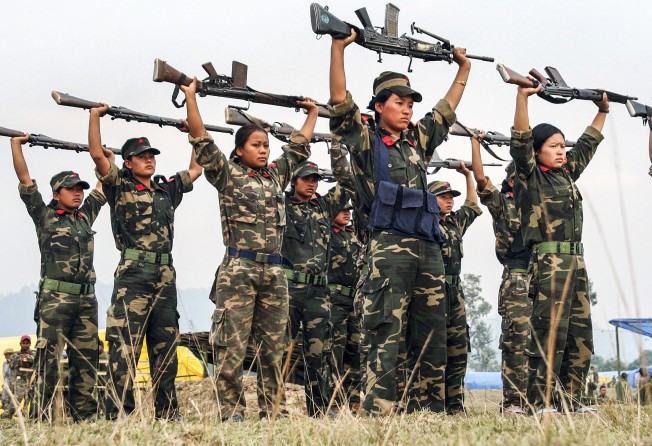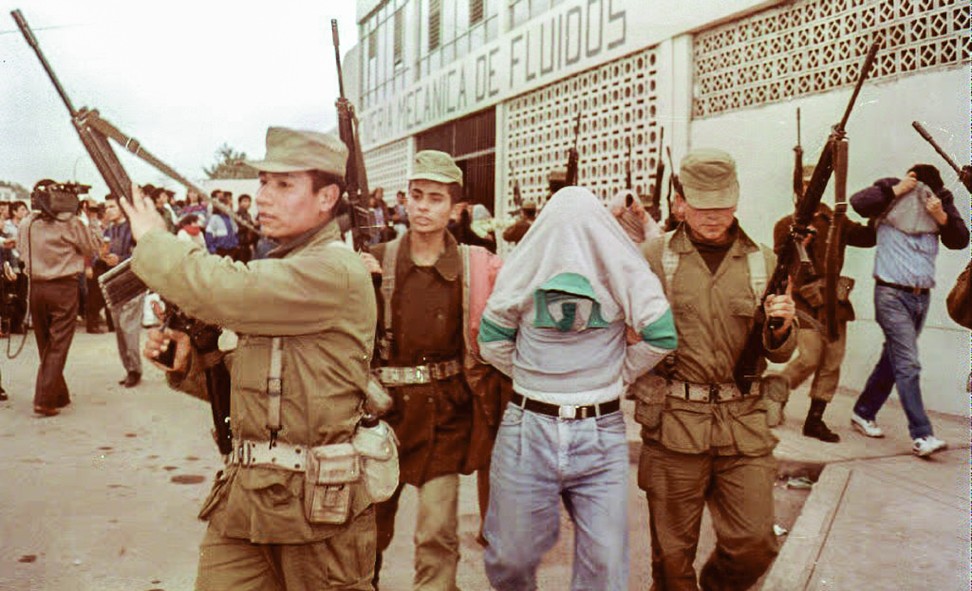Maoism: A Global History – how China exported revolution around the world
- From the Khmer Rouge to the Red Brigades, the Malayan Emergency, Shining Path, and Nepal, Mao-era China inspired insurgencies across the globe
- In an engaging, heavily researched and well crafted book, full of intriguing anecdotes, China scholar Julia Lovell gauges Maoism’s influence

Maoism: A Global History by Julia Lovell, pub. Bodley Head
In the 1960s, Beijing’s Friendship Hotel, in the leafy western suburbs between the city and its universities, became a hub for drifting revolutionaries as China sought to position itself as the global headquarters of rebellion and insurgency.
Rooms were filled with left-wing zealots, or those simply enjoying an all-expenses-paid trip to China. “There were melancholic Chilean bolero singers, Colombian actors, Venezuelan armchair guerrilleros, and the doctrinaire British Maoist Elsie Fairfax-Cholmeley, who allegedly danced in jubilation around the burning ruins of the British legation when it was torched by Red Guards in 1967,” writes Julia Lovell in Maoism: A Global History, which focuses on the global reach of Maoist thought and action.
Other visitors to Beijing during those years included Pol Pot, the leader of Cambodia’s Khmer Rouge; Dipa Nusantara Aidit, the leader of Indonesia’s Communist Party; and Abimael Guzmán, the leader of Peru’s Shining Path. This trio would have a far more pronounced impact.
Maoism may have its roots in China, but Mao Zedong’s theories of class struggle and guerilla warfare spread around the globe in the second half of the 20th century, igniting revolutions and armed uprisings in places as diverse as India, Peru, Malaysia and western Europe. And China actively exported Maoism, throwing considerable resources, in terms of money, training and manpower, into other countries’ armed struggles.
Hundreds of thousands, perhaps millions, would die as a result, the insurgencies often devouring those that started them. In Nepal, India and Cambodia, Maoist pasts still haunt domestic politics.

“Maoism not only unlocks the contemporary history of China, but is also a key influence on global insurgency, insubordination and intolerance across the last 80 years,” Lovell writes in her excellent and comprehensive guide to the development and impact of Maoism.
A professor of Modern China at Birkbeck College, University of London, Lovell has a strong track record; her previous books include the Jan Michalski prize winning The Opium War: Drugs, Dreams and the Making of China (2011). Maoism is a worthy successor.
This book begins in the Beijing courtyard home of Edgar Snow, the soon-to-be-author of Red Star Over China (1937). “Red Star is the beginning of global Maoism,” writes Lovell.
Snow’s book, which was heavily guided by Mao and his lieutenants, would be picked up and translated across the world, becoming a key text of left-wing revolutionaries. During the 12 years of the Maoist-infused Malayan Emergency, which left thousands dead, hundreds of copies of Red Star Over China were found in communist training camps. It would be largely replaced by Mao’s “little red book”, of which more than a billion copies were printed, in dozens of languages, between 1966 and 1971 alone.
During the height of the Great Leap Forward (1958-1962), when millions were dying of starvation in China, the country’s foreign aid grew by more than 50 per cent.

By 1975, China was spending more than 5 per cent of its national budget on foreign aid, compared with the United States’ 1.5 per cent.
Maoism is, at its core, an engaging book about China’s foreign policy between the 1950s and 1970s, when the country tried to exert its influence around the world. The first part of the book lays the groundwork, detailing the rise of Mao within the Chinese Communist Party and its victory over the Nationalist forces of Chiang Kai-shek in 1949. Lovell then moves further afield, detailing the rise and often fall of Maoist-inspired revolutionary movements around the world.
She examines Peru’s Shining Path, Cambodia’s Khmer Rouge, Nepal’s Maoist rebels, as well as French Maoists and the Red Brigades, a left-wing Italian terrorist group responsible for kidnappings and assassinations in the 70s and ’80s, to name but a few.
It’s clear that even before their victory in China, Mao and his colleagues intended to spread their revolution. An equivalent of a Cominform, to direct the revolution in Asia, was established in early 1949 (the People’s Republic of China would be proclaimed only on October 1, 1949). Three months earlier, the party had opened a Marxism-Leninism Academy, offering Asian communist leaders a “one-year course in Mao’s revolution taught by veteran Communists”.
This international approach would become even more pronounced after China fell out with the USSR in the late 50s, with Moscow and Beijing fighting each other for influence, as well as with Washington. Mao and his lieutenants seized every opportunity to “assert themselves as the true leaders of the world revolution”, writes Lovell.
African independence movements were major beneficiaries. Between 1964 and 1985, China spent between US$170 million and US$220 million training 20,000 fighters from at least 19 African countries. Lovell reveals that we know little about the training of these foreign revolutionaries from Chinese records, with the subject remaining highly sensitive. Thankfully, the same tight-lipped approach has not been observed by many of the groups China aided.
The Cultural Revolution, with its idea of continuous struggle, put off some Maoist sympathisers. Others, however, were inspired and while China turned away from radical Maoism in the late 70s, plenty of countries continued along its path.
Maoism is filled with intriguing anecdotes. Pol Pot lounged by Mao’s swimming pool as the latter lauded the emptying of Cambodia’s cities into forced labour projects and killing fields. Peru’s Guzmán may have met Pol Pot in Beijing while both were receiving training. Guzmán’s Maoist People’s War would claim about 70,000 lives and exact a heavy toll on the South American nation’s economy.

For all its investment, China’s returns were questionable. Mao-era China ploughed significant money, time and expertise into Africa, yet not a single lookalike Maoist regime emerged. It was in countries such as Nepal, India and Peru, where direct investment was more limited, that Maoist rebellions took root, aided by soft-power approaches.
Lovell admits that “Maoism” is more of an umbrella term used to describe a wide range of theories and practices. Approaches varied from country to country. In India and Peru, Maoists tried to superimpose “intractable visions of 1960s Maoism”, with its pitiless class struggle, while in western Europe and the US, rebels used Maoism more as a “toolkit for protest”.
Maoism is a heavily researched and well crafted book, and while the list of countries covered is not exhaustive, that was probably a good decision – at times the narrative can seem repetitive, with experiences echoing themselves half a world apart.
Lovell states early on that her book aims to bring Mao and his ideas “out of the shadows”, recasting Maoism as “one of the major stories of the 20th and 21st centuries”. The book does a thorough and convincing job of this. It might also help to finally dispel the myth – “propagated by China but widely accepted in the West,” writes Lovell – that Mao-era China had no engagement with the world beyond its borders. China was, in fact, strongly engaged for decades, helping to spread armed revolutions around the globe.